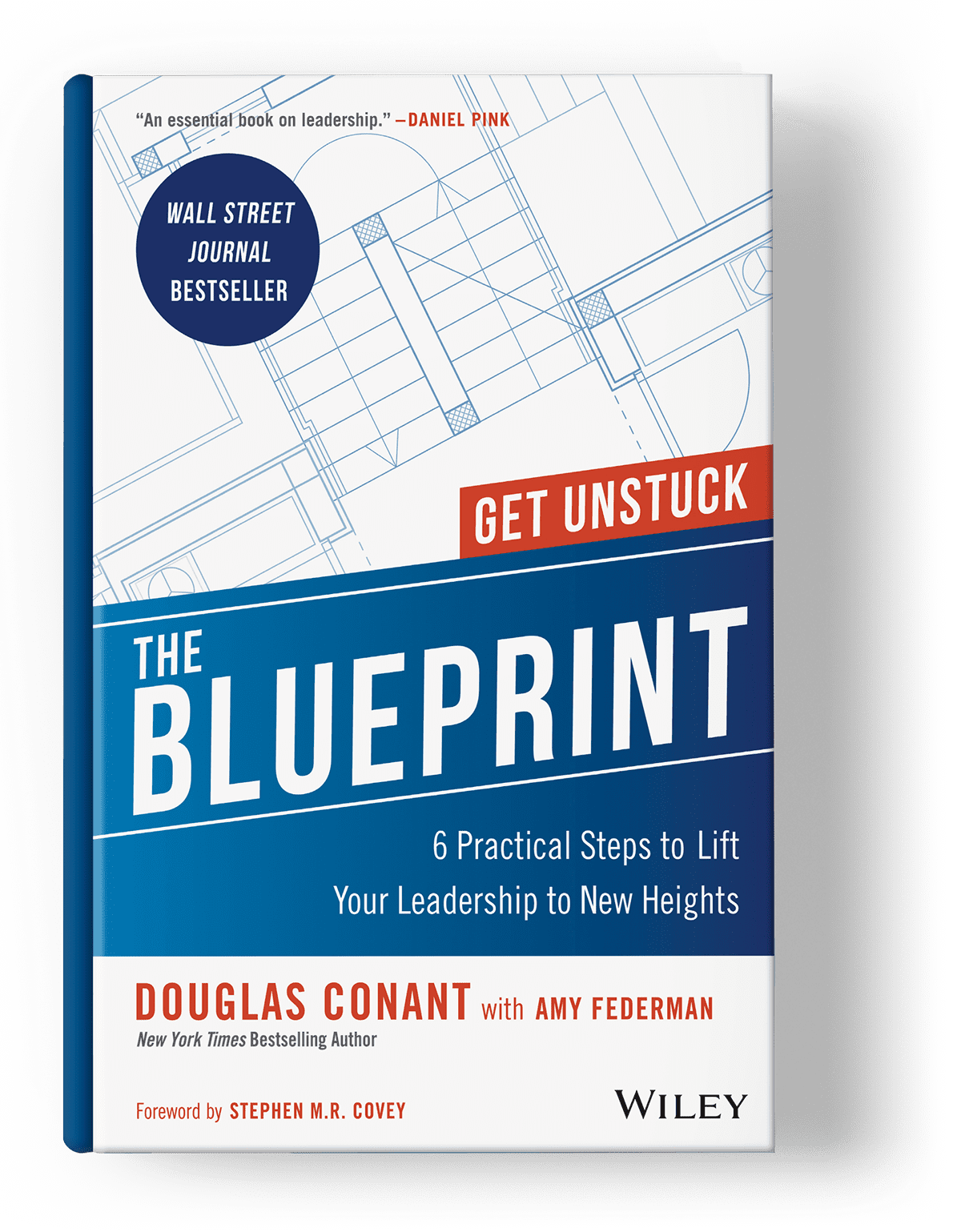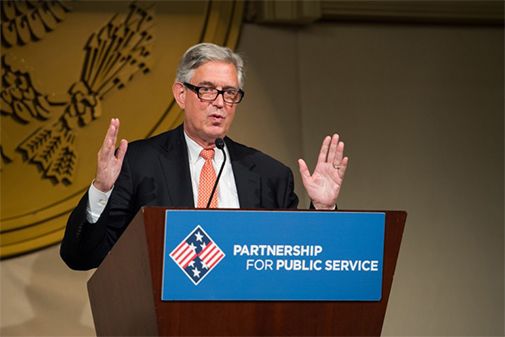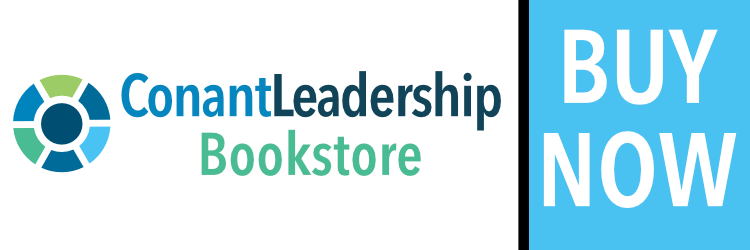How to Retain Talent for the Future – The Leadership That Works Newsletter
At ConantLeadership, we’re committed to lifelong learning and continuous improvement. In service to your leadership growth, each month we curate the Leadership That Works Newsletter, a digest of timely resources from around the web. We prepare this resource in order to:
- Share actionable advice from top leadership luminaries
- Celebrate a range of viewpoints (inclusion is not an endorsement)
- Contextualize workplace trends through a leadership lens
- Illuminate cultural recalibrations in the world of work
- Support your personal development in life, leadership, and beyond
In this month’s Leadership That Works Newsletter: How to retain talent for the future; the art of good conversation; perfection isn’t credible; kindness > niceness; don’t ask ‘why,’ ask ‘what’; why leaders need time in ‘spacious mode,’ and more.
As always, we’re sharing the content from our Leadership That Works newsletter here on our blog in case you’re not subscribed to our mailing list. If you find these links enriching, you can sign up to receive our newsletter right here.
How to Retain Talent for the Future
“Turnover isn’t just a statistic anymore—it’s a daily reality. For many organizations, keeping talent has become as critical as attracting it,” writes Ryan Paugh in this Senior Executive piece on how to retain talent in “a new era of work.” Knowing that the answer to the retention conundrum isn’t “one-size-fits-all,” SeniorExecutive.com convened an HR think tank, “a handpicked group of human resources leaders” to share their best practices for building loyal workforces. Here are some key highlights from an array of HR Leaders.
Offer Coaching That Actually Works. “Managers have an enormous influence on whether someone stays or leaves . . . When employees feel supported in their growth, their engagement skyrockets.” – Heide Abelli, CEO of SageX.
Provide Purpose and Flexibility: A Winning Combination. “When people feel their work aligns with their values, they stay,” and, “flexibility doesn’t just mean remote work . . . it’s about tailoring roles and schedules to fit people’s lives, not the other way around.” – Divya Divakaran, Director of HR at EVS.
Utilize the Simple Power of Listening. “Retention isn’t always about big programs or expensive benefits.” Often, “it’s about making people feel seen.” – Nicole Smart, Inclusion Strategist.
Remember Retention Starts Before Day One. “Understanding a candidate’s motivations, goals, and expectations is key,” during the recruitment process. “If you’re proactive in aligning expectations from the start, you’ll reduce early attrition.” – Michael D. Brown, Senior Managing Partner at Global Recruiters of Buckhead. Get the full story, including many more insights from the HR think tank here.
**For more on this, explore our coverage of why one CEO says leaders must learn to “listen from the bottom up.”
The Art of Good Conversation
If you’re anything like Arthur C. Brooks, whose recent piece in The Atlantic covers the art of good conversation, you may have learned to dread professional events and networking dinners because you fear slogging through small-talk that is often “lengthy, superficial, and tedious.” It doesn’t have to be this way. Brooks says that social interactions, whether for work or otherwise, can be improved for all participants if more of us simply “work to get better at them.” To train us in the conversational arts, Brooks turns to a colleague, Allison Wood Brooks, author of the new book, Talk: The Science of Conversation and the Art of Being Ourselves, which “follows decades of research on how we interact with people, and how to do it better and more enjoyably.” In the book, Brooks lays out her TALK framework for “conducting strong and enjoyable conversation,” based on years of research. Here’s an overview.
T is for topics. “Before you go into a conversation, think of a few subjects that you’d like to discuss with your partners.”
A is for asking. “A conversation without questions is unrewarding . . . Good questioning requires deep listening. When you’re genuinely focused on what the other person is saying, follow-up questions come naturally.”
L is for levity. Humor “makes conversations fun,” but “successful humor rarely means telling jokes; it means maintaining a ‘good humor’: a lightness and a gentle wit, which keep things from being too heavy and serious.”
K is for kindness. “This is probably the most important ingredient in a good conversation. You might think of it as generosity, because it involves thinking about what the other person in a conversation needs,” e.g., “encouragement, hard feedback, new ideas, a quick laugh, a sounding board, challenging questions, or just a break.” Kindness in this context “means focusing primarily on the other person, rather than on yourself.”
Get the full story here. (This post may appear behind a paywall for some readers.)
Perfection Isn’t Credible
“Leaders who strive to appear flawless may believe they’re building respect and confidence, but reality often tells a different story,” writes Marlene Chism in this SmartBrief post on how to earn trust with stakeholders. While Chism acknowledges it can be tempting to present a veneer of infallibility, she warns, “This strategy almost always backfires,” chiefly because, “perfection isn’t credible.” Research shows it’s more effective to own up to mistakes and shortcomings because, “demonstrating accountability strengthens leadership, builds trust, and creates a more resilient, effective team.” Chism outlines several key benefits to a leadership approach that eschews perfection in favor of authenticity. Here are three.
Create sustainable success. “Leaders who admit mistakes and share what they’ve learned foster an environment of transparency and mutual respect, which is far more conducive to long-term success.”
Create psychological safety. “Teams thrive when members feel safe to speak up, share ideas, and acknowledge errors without fear of blame or retribution. When leaders admit their own mistakes, they set the tone for a blame-free environment where transparency and collaboration flourish.”
Model conflict management. “Admitting mistakes models conflict capacity, the ability to deal with other people’s emotions when the stakes are high. When leaders openly acknowledge errors and take steps to correct them, they demonstrate that conflict can be handled constructively and collaboratively. This teaches teams that it’s okay to confront challenges and resolve disagreements in a way that strengthens the group dynamic rather than weakening it.”
Get the full story here.
**For more on this, get your free chapter of The Blueprint: 6 Practical Steps to Lift Your Leadership to New Heights, which offers the motto “Forget Perfection” as one of its central rallying cries.
Kindness > Niceness
“High-performing teams are built on trust and psychological safety. Kindness is one of the fastest ways to build this high-performing environment,” writes Graham Allcott in this overview of key insights from his new book, KIND: The Quiet Power of Kindness at Work. While some people may bristle at the idea of kindness being a crucial leadership competency, Allcott says skeptics are laboring under a misconception: “People confuse being kind with being nice.” He explains, “Nice cultures often focus on keeping the peace but shirk the responsibility to tell the truth or call out bad behavior. On the other hand, kind cultures focus on truth and grace. Nice is about telling people what they want to hear. Kind is about telling people what they need to hear.” In fact, it actually takes strength and courage to operate with kindness and clarity when it might be easier to take a path of less resistance. Because it requires conscious effort to lead with kindness, Allcott stresses the importance of remembering that “kindness is a verb.” He says, “all of us have the capacity to be kind or unkind. Kindness isn’t something you are, it’s something you do . . . there are no prizes for just having the thought. It’s the action that counts.” Get the full story here.
**For more on kindness, explore a recent piece from Doug Conant that explains why “people don’t care how much you know until they know how much you care.”
Don’t Ask ‘Why,’ Ask ‘What’
“At the executive level, the key to influence isn’t just asking questions—it’s asking the right questions,” writes Scott Eblin in this how-to guide for driving alignment and mobilizing teams towards strategic goals. Eblin says that the key to having productive conversations is being more intentional with your word choice: “While ‘Why’ questions might seem direct, they often lead to justifications rather than insights. They tend to anchor discussions in the past—why something happened, why someone holds a certain belief—rather than surfacing forward-looking solutions.” Instead, he says, “high-performing executives use ‘What’ questions to unlock deeper insights, uncover hidden risks, and align stakeholders.” This shift from why to what, “helps executives move conversations from resistance to resolution.” Eblin shares ten examples of effective ‘what’ questions, and here are the first five.
1. What are your biggest strategic priorities in this situation? “Surfaces overarching objectives that may be driving their stance.”
2. What risks or unintended consequences do you see if we move forward with this approach? “Uncovers hidden concerns that could derail execution later.”
3. What would success look like, not just for you, but for the business as a whole? “Expands the conversation beyond personal or functional priorities to enterprise impact.”
4. What underlying factors or constraints are shaping your perspective on this issue? “Reveals external pressures (e.g., regulatory, competitive, investor-driven).
5. What past experiences—good or bad—are informing your thinking on this decision? “Helps understand whether prior failures or successes are influencing current risk tolerance.”
Get the full story, and the remaining five questions, here.
Why Leaders Need Time in ‘Spacious Mode’
“We live in a work world obsessed with what we in our research call doing mode — setting goals, forming to-do lists, and checking items off,” write Megan Reitz and John Higgins, the authors of this Harvard Business Review piece about the leadership benefits of creating “more space to think.” The authors say that while attending to an unyielding flurry of tasks is an unavoidable component of modern work, leaders must consciously step out of “doing mode” because otherwise, “we risk failing to grasp the big challenges and opportunities in front of us, damaging our relationships, and missing the joy that makes life and work worthwhile.” The authors caution that the solution is not merely “carving out more time,” but requires “engaging a different kind of attention,” and entering “spacious mode, in which attention becomes expansive and unhurried.” In spacious mode, “the shoulds and musts of doing mode are put on the backburner,” which “allows us to widen our view, engage with curiosity, encounter what is not readily measurable or predictable,” and encourage new insights to emerge, providing a fresh wellspring of energy for tackling the challenges of the day. The authors recommend several tactics for accessing spacious mode and here are the top two.
Give yourself permission first. “Although we tend to instinctively blame those in charge for trapping us in doing mode, we are often our own worst taskmasters. So, it’s up to you to start by becoming truly open to spacious mode.
Train your mind to be more spacious. “Around 10 minutes of regular mindfulness practice a day can, over time, develop a capacity to pay attention differently. The goal is to create a habitual space between stimulus and response.”
Get the full story here.
**For more on this, explore our piece on why a ‘gratitude mindset’ helps replenish your energy so you don’t have to ‘pour from an empty cup.’
AI Requires ‘AND’
“AI and new technology are obviously important to the future of work strategies, but I worry that they may be taking up too much of our attention,” writes Jennifer Moss in this Chief Executive piece on why “the most powerful AI asset is your people.” Moss warns that companies may be focusing too much on the technology and not enough on the people who will use the technology. She asks, “how is it possible to achieve growth if we don’t have a properly skilled present and future workforce?” Moss urges leaders to consider this new world of work with an abundant mindset: “It’s all about ‘and’ statements—that two things can be true at the same time. AI can be positively impactful on the world and humans are required to ensure that AI will have a positive impact on the world. AI should not replace humans. We should think of AI as part of the team.” The path forward is to prioritize two things simultaneously: “As much as we invest in AI, we should be allocating to training . . . reskilling and upskilling aren’t just buzzwords.” Moss offers five steps for “equipping the future by reframing the present,” and here are the first two.
Step 1: Realize the purpose. “People need to know why change is happening, and how it will impact them. And they need to feel in control of their own futures.”
- Bring internal stakeholders into the conversation
- Host big-room meetings where critical feedback is welcome
- Solicit anonymous feedback
Step 2: Define upskilling/reskilling objectives. “If people’s jobs and tasks are going to be affected in a major way, then it’s imperative to have a careful and compassionate plan in place.”
- Identify skill gaps
- Be explicit in communicating the goal
Get the full story, including all 5 steps for implementing change, here.
**For more on this, explore our limited series ‘EQ Answers to AI Questions,’ where our Founder, Doug Conant, shares his vision for a future that places people at the center of the AI conversation.
Reflection Is the Path to Meaning
In this Greater Good Magazine coverage of a new book, Start Making Sense, by psychologist Steven Heine, leaders can find advice for making their work and lives more meaningful. Pursuing deeper meaning is a worthy pursuit because, according to Heine, “When people feel they are leading a meaningful life,” they come alive and, “they have a sense of purpose that guides their behaviors. They feel that their lives matter and that they’re capable of making a difference in the world.” Heine says the keys to a more meaningful life blossom from three key areas: “our close personal relationships and communities, our work, and being connected to something greater than ourselves.” To avoid a life lived on auto-pilot, and to pursue more meaning, Heine points to self-reflection as a key behavioral practice. The coverage shares seven tips for using reflection to cultivate a more meaningful daily life and here are three.
Ground yourself in your personal values. When people are anchored in their values, “they know who they are, who their important relationships are, and what they stand for, and they are in a better position to confront any new threats they might encounter.”
Find meaning and purpose in your work. “Work provides a sense of identity and self-worth, and it allows us to contribute to something greater than ourselves, which feels purposeful.” If, upon reflection, it’s hard to find meaning in your current role, or if you’re retired, Heine says “it’s still possible to find meaning in volunteering, participating in groups that interest you, or taking classes.”
Recognize your own heroic journey. “All of us have had to face obstacles at some point in our lives. If we can reflect on how we overcame those obstacles—whether by pulling on our personal resources, learning new ways of thinking or behaving, creating allies to help us in our quest, or something else—we can tap into our own heroic narrative and find a sense of meaning in our existence.”
Get the full story here.
**For more on this, explore our 6-step Blueprint process for lifting your leadership to new heights, which includes guided prompts for reflection and many exercises for discovering your values, purpose, and beliefs.
Insights & Resources from ConantLeadership
Limited Series—EQ Answers to AI Questions
In this special limited series, ConantLeadership Founder & CEO, Doug Conant, provides thoughtful, human answers to pressing leadership questions that are generated with the help of AI.
The third and latest question in the series is: “How can you promote self-reflection and growth in your team?” Read Doug’s EQ answer in the most recent edition here.
Then explore the second edition to get Doug’s battle-tested advice for driving change in a complex world.
And read the first edition to find actionable tips for making people feel valued in the digital age.
26 Tough-Minded Leadership Quotes for Better Performance
In this newly updated quote roundup, find an abundance of quotes to inspire you to execute with excellence and produce extraordinary results, including five new bonus quotes from our Founder, Doug Conant.
10 Powerful Ways to Give Thanks with Your Leadership
In this seasonal reflection from our Founder Doug Conant, now updated with fresh insights, we offer ten practical ways to show people they are valued all year long.
2 Leading CEOs on How to Build Highly Engaged Teams
In this blog recap of their recent conversation at our Blueprint Leadership Summit, explore Jim Donald and Doug Conant’s insights about how to build better teams in the 21st century.
2024’s Best Lessons to Carry into 2025
At the end of last year, we compiled this roundup of all the newsletters from 2024, chock-full of leadership insights to buoy you in 2025. Look for a bonus quote and note from Doug Conant at the end.
2024’s Best Lessons to Carry into 2025 January’s Leadership That Works Newsletter
In last month’s newsletter: Beware the ‘broken feedback’ loop; vulnerability is a strength; think in centuries, not quarters; ‘edit’ your life at your career midpoint; the importance of ‘self-concept,’ and more.
 About the Author: Amy Federman is ConantLeadership’s Director of Content and Editor in Chief, and co-author with Doug Conant of the WSJ bestseller, The Blueprint.
About the Author: Amy Federman is ConantLeadership’s Director of Content and Editor in Chief, and co-author with Doug Conant of the WSJ bestseller, The Blueprint.

“Doug Conant is remarkable—and so is this work.“
– Stephen M. R. Covey
Author of The Speed of Trust

The Blueprint
6 Practical Steps to Lift Your Leadership to New Heights
By Douglas Conant with Amy Federman

Have Doug Speak at Your Event
Doug works collaboratively with event organizers to customize his material for each audience.



0 Comments